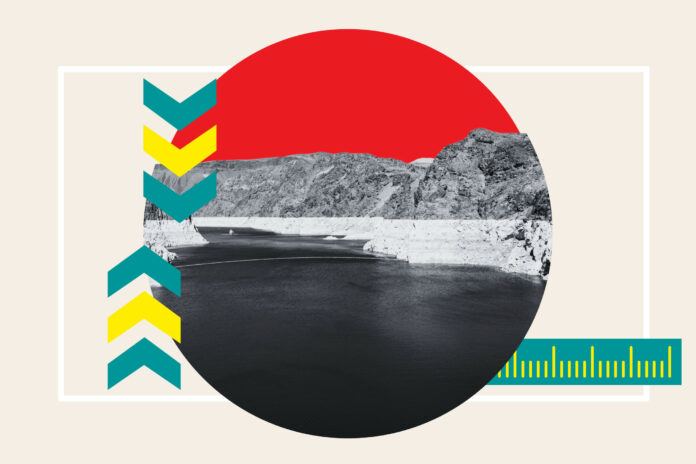As spring begins, many eyes are on Lake Mead. When the weather becomes warmer, snowmelt will trickle down from the surrounding mountains and feed into the reservoir.
The reservoir, which lies between Nevada and Arizona and is one of the Colorado River reservoirs, provides water for 25 million people living in the region. But years of prolonged drought and overconsumption of water have meant that its water levels have been concerningly low in recent years.
But how have its levels fared so far this year?
“The combined storage of Lakes Powell and Mead, the two large reservoirs on the Colorado River, has declined somewhat since the beginning of the year,” Jennifer Pitt, the National Audubon Society’s Colorado River program director, told Newsweek.
“Lake Mead, which receives water released from Lake Powell, and makes releases to water users downstream, has since January 1 increased by about 7 percent or around 600,000 acre-feet,” Pitt said.
Craig A Walker/Getty
At the beginning of this year, Lake Mead’s water level was at 1,068.18 feet. With a steady increase through January and February, it reached a peak of 1,076 feet.
However, since then it has declined throughout March. This is not a surprise. The lake’s water levels fluctuate seasonally.
The lake’s current levels are a huge improvement from previous years. In the same period last year, Lake Mead started off at around 1,044 feet before steadily climbing through the spring. This was due to a particularly wet year, when a record amount of snowpack accumulated in the surrounding mountains.

In 2022, however, the lake had a very bad year when it reached its lowest-ever level on record, 1,040 feet in July. The lake was also affected by prolonged drought conditions.
Snowpack levels so far this year are slightly above average. Most regions are between 90 and 100 percent snow-water equivalent, which determines how much water a snowpack contains.
By the end of 2024, water storage in Lake Mead is expected to be a bit lower than it was by the end of last year. This is because water use will be greater than the water supply allows, according to Pitt.

“This supply-demand imbalance is a problem because over time it means we are draining the reservoirs,” Pitt said. “Moreover, as climate change continues to shrink the Colorado River, the supply-demand imbalance will grow and the reservoirs will empty faster unless water users throughout the basin can figure out ways to use less.
“Colorado River decision-makers are currently trying to negotiate new rules for these reservoirs,” she continued. “Their success at balancing supply and demand will be essential to provide a secure water supply for every living thing that depends on this river.”
Do you have a tip on a science story that Newsweek should be covering? Do you have a question about Lake Mead? Let us know via [email protected].
Uncommon Knowledge
Newsweek is committed to challenging conventional wisdom and finding connections in the search for common ground.
Newsweek is committed to challenging conventional wisdom and finding connections in the search for common ground.


